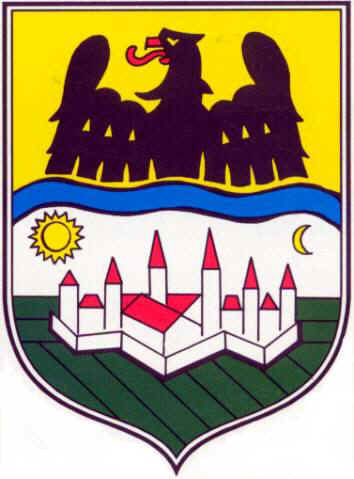|



VISITING
AUTHOR/EDITOR ARTICLE
JULY
2009

To
Be A Mother in Neudorf
By
George Taubel

  
Forwarded
From German Cultural Society, St. Louis

Women in our village had a hard life. From spring until fall,
they worked from early morning to late evening. The men worked in the
fields and because the work was done manually, it was very time
consuming. The women had to take care of the household with all its
work such as cooking, milking, feeding the animals, tending vegetable
gardens, laundry, taking care of the children and a lot more.
Girls attended grade school until they were about 12 years old,
then they were confirmed in the church, and started helping with
household work. They married quite young, many had children long
before they were 20 years old. As long as the girls were unmarried
they wore light colored clothing and elaborate hair-do’s on Sundays
and holidays. But as soon as they were married, they wore dark
clothing, braided hair covered with a cap, and a dark kerchief when
they left the house.
The woman’s daily chores started with the preparation of
breakfast, making up lunch for the men to take with them to work. When
the men worked around the house, she prepared a hot lunch, then had to
milk the cows, feed the animals, gather eggs, take care of the
children, and much more. In the afternoon she had to make preparations
for the evening meal, get vegetables from the garden, and also clean
and peel them.
When poultry was served, she killed, gutted, cleaned and
prepared the meat for cooking. Firewood for the kitchen was cut, split
and stacked by the men once a year. She had to carry as much as she
needed to the kitchen every day. In our family, there were usually
five to seven adults at a meal, so there had to be ample food. For
holidays and other festivities, when a lot of people were gathered,
more elaborate meals were prepared by the housewife a few days in
advance, and relatives helped with the preparations.
Bread was baked once each week. The day before baking, dough
was prepared in a wooden trough and kept warm overnight. An outdoor
oven was maintained in every household, built as a vaulted brick
structure. The bread was not baked over an open flame, but a hot fire
was built up in the oven and maintained until the bricks were very
hot, then the fire was pulled out and the dough, shaped into round
loaves, was placed in the oven. The loaves weighed anywhere from 4 to
6 pounds. When the dough was ready for baking, a fist-sized portion
was put aside. When the bread was baked and taken out of the oven, the
reserved portion of dough was rolled out until it was flat and round,
then baked in the oven until it had a crisp crust which was then
rubbed with garlic and bacon, and given to the children.
One of the weekly chores for the housewife was doing the
laundry, which was done by hand. Women in our area wore skirts with
many pleats, and ironing them after they were laundered and starched
was very time consuming. Laundry soap was homemade from discarded
fats. The fat was heated in a vat, lye was added and the mixture was
boiled and then poured into moulds. When it had cooled down and
solidified, it was cut into convenient pieces.
In the spring, women started vegetable gardens by turning over
the soil, then planting, weeding and watering. Enough vegetables had
to be planted to last the whole year. During the summer and fall
months, fruit preserves, marmalade, pickles, tomato juice and dried
fruit was prepared. Fresh vegetables were stored in the wine cellar
where carrots, parsley, and potatoes were partially buried in the
ground.
People in our area were, to a great extent, self-sufficient.
They raised their own vegetables, and animals for meat. They processed
the meat by turning it into hams and sausages which they smoked to
preserve them. The only ingredients bought at the stores were salt,
sugar and coffee. Tea, which was mostly for medicinal purposes, was
made from herbs growing in our area.
When a woman was expecting a baby, she did not leave the house
during her pregnancy. Wife and husband did not sleep in the same room
while she was expecting, so that any discomfort she might experience
would not disturb his sleep.
When a mother had a daughter, she would start to gather things
for her dowry early in the girl’s teen years. The mother raised
geese for feathers and collected enough for a feather bed and several
pillows. Bed linens and curtains were embroidered. A wardrobe was
filled with embroidered tablecloths, napkins and towels.
Grandmothers sometimes helped with household work, but mostly
they watched the children while the parents were at work. The
grandfathers performed productive activities in the village if they
were able. Since the children spent a lot of time with grandmothers
who indulged them in ways that their parents did not, there was a
close bond between grandchild and grandmother.

|

The
name is derived from the local region of
 = Banater Neudorf
= Banater Neudorf
(Banatsko), while Novo
Selo literally means "New Village" in , hence the full meaning
of the name would be "a new village of Banat".
The current official Serbian name
of the village (confirmed as official in 1922) is Banatsko
Novo Selo, but it has previously also been known by
different names throughout its history. Older Serbian name
of the village (confirmed as official in 1854) was simply
Novo Selo . it has been known as Neudorf,
Banater Neudorf, and Pfefferthal. it has been known as Ujfalu (also as Réva-Ujfalu
and Bánát-Ujfalu) it
has been known as Satu Nou.
Geography
Banatsko
Novo Selo is located on flat and fertile plains at (45.0554,
20.8858), approximately 15 km NW of Pancevo and 28 km NW of It is located within the in the
Province of which is in the
northern part of
The largest neighbouring settlement is Pancevo, but the
region is also scattered with other smaller inhabited
places, similar in size with Banatsko Novo Selo, such as and The village is also on the main thoroughfare between
the capital city Belgrade, and
The altitude above sea level is roughly about 105 meters, or
347 feet.
History
The
village was founded in 1765. It was settled by German settlers,
but also by and .
(*)
Before the foundation of the village, two older settlement
known as Zeldoš and Velika Dolina existed at this location.
These settlements were populated by Serbs and Romanians.
(*)
In 1767, 43 Romanian families from were settled in Novo Selo. In 1918, about 80
percent of the population of the village were ethnic Until 1959, Banatsko Novo Selo had a status of
separate municipality.
(Source
of information: http://www.absoluteastronomy.com/topics/Banatsko_Novo_Selo
)

Kurze
Geschichte Neudorfs
Novoselo is mentioned for the first time in the year 1554
with three (3) taxpaying households. In the year 1570 there
are eleven (11) and in 1590 nine taxpaying households (in
the Turkish taxlists). After the wars with the
Turkish armies in 1699, Novoselo was called Puszta. In 1701
through 1709 in the area "west of Lorenze" it was
still Puszta. There were however, seven (7) taxpaying
households in the year 1715. The name of the place St.
Lorenz is now called "Lorenzi"
In 1731 Novoselo and the Puszta St. Lorenz (Lovrenz)
belonged to the court chamberlain of Baron Johann Markus of
Zuano or Zuana (Joana). He was also Kameral commissioner of
Upper Hungary
and had the task to settle the uninhabited areas of Hungary.
Baron Johann Markus von Zuana allowed Swabian farmers to
enlist, and settled them on his private property. He
provided Novoselo with four (4) fairs every year and was
landlord from 1731 until 1746.
Novoselo later came into the possession of the count Palffy.
Palffy sold St. Lorenz and Novoselo to the royal advice
Csepeni Johann Adamovics. Adamovics sold the property to the
royal advice Cseh. This family was owner until the 19
century.
An emergency due to the epidemic in the year 1738 (the
pestilence) was probably what caused occasional many
inhabitants of Novoselo to move away. Also, a flood made the
initial years more difficult for the settlers.
A quotation from the church book:
"In the year 1751 there was an inundation/overflow of
the Danube river which increased up to the large pear tree
against a place which was destined for the church, where the
chapel stood. On the 3rd, 4th and the 5th of April the
water level was on/at its highest stand. The
whole village was underwater. April 4th was "Palm
Sunday". The settlement became stabilized
by the further influx from colonists, into the reign of
Joseph II.
The " flowering village", known/called by the
elder generation, required the structure work of generations
of its people/Inhabitants.
Neudorf/Novoselo
Website at:
http://www.feldenzer.com/neudorf%20History.htm

|

|